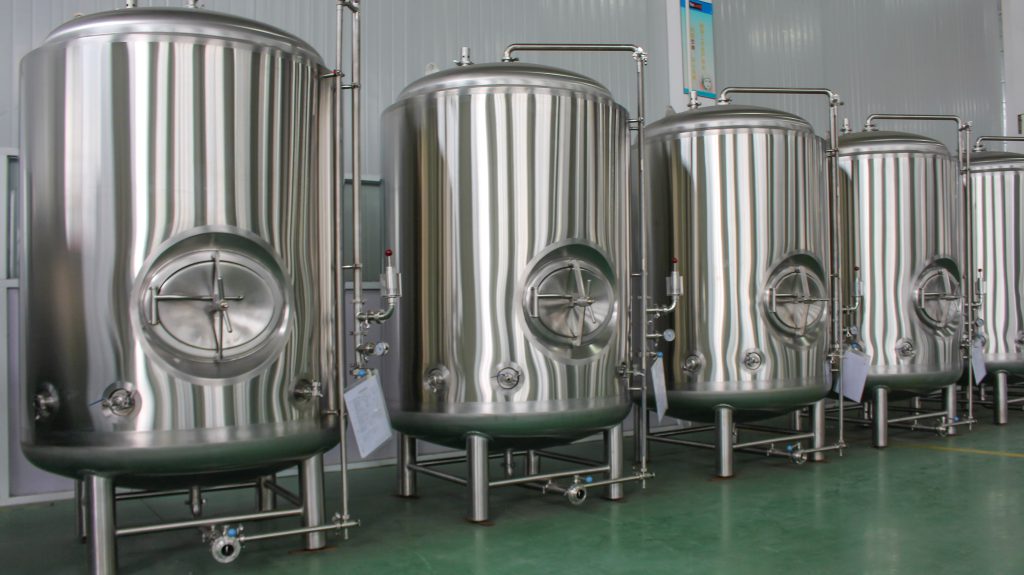Invoering

Brewhouse equipments are the backbone of any brewery, transforming raw ingredients into the flavorful beer we enjoy. This blog post will delve into the essential brewhouse equipments that every craft beer enthusiast or aspiring brewer should know about.
Begrip Brewhouse Equipments
Brewhouse equipments are the machinery that transforms raw ingredients—malt, hops, water, and yeast—into the flavorful beer we enjoy. The specific brewhouse equipments needed can vary based on the size of the brewery and the style of beer being produced, but there are several must-have pieces that are common to most setups.
Key Components of a Brewhouse:
- Pureer Tun: The mash tun is where the milled grains (malt) are mixed with hot water to create a sweet liquid called wort. Enzymes in the malt convert the starches into fermentable sugars.
- Lauter Tun: The lauter tun is used to separate the wort from the spent grain. The wort is drained through a perforated bottom, leaving the grain behind.
- Boil Kettle: In the boil kettle, the wort is boiled to sterilize it, evaporate excess water, and concentrate the flavors. Hops are added during the boil to impart bitterness and aroma.
- Whirlpool: A whirlpool is a large, conical vessel that uses centrifugal force to separate hop particles and other solids from the wort.
- Wort Cooler: The wort cooler rapidly cools the hot wort to a temperature suitable for pitching yeast.
- Fermentatievaten: These vessels, often called fermenters or tanks, are used to convert the sugars in the wort into alcohol and carbon dioxide through the action of yeast.
- Bright Beer Tank: Once fermentation is complete, the beer is transferred to a bright beer tank for conditioning and clarification.
Essentieel Brewhouse Equipments for a Small-Scale Brewery
For homebrewers and small-scale breweries, all-in-one brewing systems are becoming increasingly popular. These systems combine multiple brewhouse equipments into a single unit, making brewing more efficient and convenient. However, for those who prefer a more modular setup or plan to expand their brewery, individual components like those mentioned above are still essential.
Key considerations for small-scale breweries:
- Capaciteit: Choose brewhouse equipments that align with your production goals, whether it’s brewing a few batches per week or scaling up to larger volumes.
- Portability: Consider the ease of cleaning, sanitizing, and storing your brewhouse equipments, especially if space is limited.
- Veelzijdigheid: Opt for brewhouse equipments that can handle a variety of brewing styles, from lagers to IPAs.
- Automatisering: Explore the level of automation that suits your needs and budget, from manual operations to automated systems that control temperature, pH, and other parameters.
The Role of Automation in Brewing
Automation has revolutionized the brewing industry, allowing brewers to produce consistent, high-quality beer with greater efficiency. Automated systems can control temperature, pH, and other critical parameters, reducing the risk of human error.
Benefits of automation:
- Improved consistency: Automated systems can maintain precise control over the brewing process, resulting in more consistent beer quality.
- Increased efficiency: Automation can streamline tasks and reduce labor costs, allowing brewers to focus on other aspects of their business.
- Enhanced data collection: Automated systems can generate valuable data on brewing parameters, helping brewers optimize their processes and make informed decisions.
Vergelijking van verschillende Brewhouse Equipments
| Functie | Small-Scale Brewery | Large-Scale Brewery |
|---|---|---|
| Capaciteit | 5-50 gallons | 50+ gallons |
| Automatisering | Semi-automated or manual | Highly automated |
| Materialen | Roestvrij staal | Stainless steel or other corrosion-resistant materials |
| Kosten | Relatively affordable | Significant investment |
Het juiste kiezen Brewhouse Equipments

When selecting brewhouse equipments, several factors should be considered:
- Capaciteit: The size of your brewery will determine the capacity of your brewhouse equipments.
- Begroting: Brewhouse equipments can be expensive, so it’s important to set a realistic budget.
- Style of beer: The type of beer you plan to brew will influence your brewhouse equipment choices. For example, brewing lagers requires precise temperature control, while brewing IPAs may involve specific hop additions and whirlpool techniques.
- Automatisering: The level of automation you desire will affect the cost and complexity of your brewhouse equipment system.
Conclusie
De keuze van brewhouse equipments is a critical decision for any brewer. By understanding the essential components and considering factors such as capacity, budget, and style of beer, you can select the right brewhouse equipments to meet your brewing needs. With the right brewhouse equipments and a passion for brewing, you can create exceptional beers that will delight your customers.
FAQ
What is the difference between a mash tun and a lauter tun?
A mash tun is where grains are mixed with hot water to convert starches into sugars. A lauter tun separates the sugary wort from the spent grain.
How do I choose the right size boil kettle?
Consider your desired batch size and the evaporation rate during the boil. A larger kettle allows for more flexibility and potential scaling.
What are the benefits of using an automated brewing system?
Automated systems offer consistent results, reduce labor costs, and allow for precise control over temperature, pH, and other parameters.
Can I build my own brewhouse?
Yes, you can build your own brewhouse, but it requires significant technical knowledge, skill, and resources. Many homebrewers and small-scale breweries opt for pre-built systems or kits.
Hoe vaak moet ik mijn brewhouse equipments?
Clean your brewhouse equipments thoroughly after each brew day to prevent contamination and maintain optimal performance. Regular sanitation practices, including cleaning and sanitizing, are crucial.

